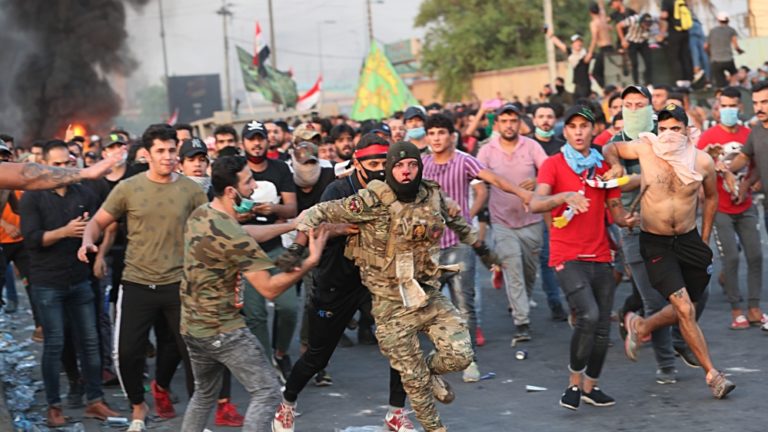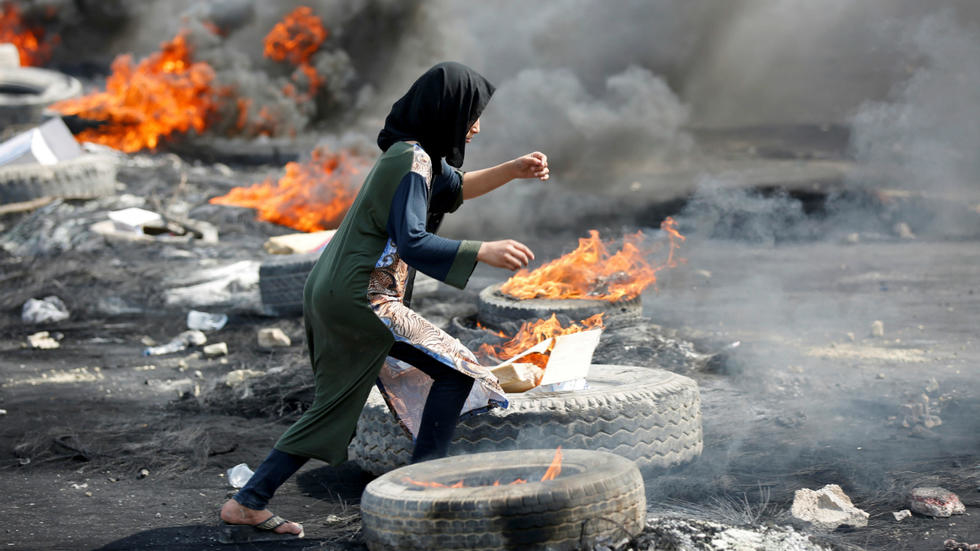109 killed in Iraq
Almost a week after the start last Tuesday, the anti-government protests in Iraq have taken a violent turn with 109 people killed and over 6,000 wounded so far. The demonstrations, mostly by young men in the Shia areas of Iraq, started with the aim of protesting corruption, unemployment and lack of quality in public services. With the death toll rising every day, the demonstrations are presenting a tough challenge for PM Adel Abdul Mahdi, shortly a year after he was elected.
Despite the PM going on national television last Thursday and announcing that the demonstrators’ demands “have been heard”, violence still erupted in the capital. Although, regardless of the aforementioned sentence, the PM did not address the demands clearly and stated that the harsh measures that are being taken by the government (such as the cutting of the internet nationwide and imposing a curfew) are ‘bitter medicine’ that needs to be swallowed. According to the BBC, this has been the deadliest unrest in Iraq since the defeat of ISIS in 2017.
The reasons for the demonstrations can be broken into two sections: what appears to be the cause and the underlying agenda. As of last year, 17% of the working-age population in Iraq is unemployed, while the overall unemployment rate in 2018 was 7.9%. The protests started off with the aim of improving opportunities for unemployment and life quality, yet have taken a political turn in the last couple of days. It appears that the demonstrations for better life quality are just the tip of the politically unsettling iceberg. With the pro-Iran militia opening fire at the demonstrators over the weekend, the protesters have also become vocal against the Iranian political influence in Iraq.
According to Al-Monitor, the Iranian ambassador in Baghdad, Iraj Masjedi, expressed in an interview for Dijlah that “Iran would target the United States in Iraq if the United States threatened Iran”, which was taken by the Iraqi population as a clear political interference.

Secret Agenda
18 years after President Bush declared the oil-driven ‘war on terror‘, and almost 13 years after the execution of Saddam Hussein following the US intervention in Iraq, the political turmoil caused in Iraq by the protests- as in most of the Middle East- does not remain politically free from US influence and agenda.
Following Iran’s technological advancements towards nuclear military technology, the US feels threatened over Iran becoming a powerful figure in such an important region of the world. President Trump, for a while has been scheming to attack Iran and redesign the balance of power in the Middle East. Iran, aiming to solve the Syria crisis with Turkey and Russia and also through alliances, backed the defeat of ISIS.
Iran has also been supporting Syria, Iraq and Hezbollah, and has therefore been disrupting US and Israel’s regional political plans. The best way for the US to take revenge on Iran, and more importantly to reshift the balance of power into a more beneficial state for the US would be by provoking conflict in Iraq.
The Iraqi demonstrators fighting for their day to day rights remain as pawns and possible collateral damage in a much bigger fight for regional power.

Related topics: Where Conflict Meets Cartoons– The End of Erdogan? – Deterioration of Women’s Rights in Turkey
What’s next for Iraq and the Middle East
The military force in Iraq, as of an announcement a couple of hours ago, accepted the use of excessive force and violence. The military said “Excessive force outside the rules of engagement was used and we have begun to hold accountable those commanding officers who carried out these wrong acts,” according to Al Jazeera.
While prominent Shiite clerics Muqtada al-Sadr and Ammar al-Hakim, two important figures forming a possible opposition to the current government, have expressed their support for the protesters, the future of the protests depends on how the PM acts. Unpredictable because the testing of Iran’s influence in Iraqi politics could backfire, or the instability of POTUS’s military and diplomatic decisions may further contribute to the quagmire.
With the very recent developments, following a phone call with Erdogan’s government in Ankara, President Trump has announced that the US is leaving Syria and abandoning their Kurdish allies, withdrawing the troops and are not planning on getting involved with any eventual fights breaking out in the area.
This shows that the Middle East remains a high-risk area for political conflict and armed violence and regardless of there being a US intervention or not, the regional political power structure is to shift rather impredictably.
Editor’s Note: The opinions expressed here by Impakter.com columnists are their own, not those of Impakter.com – In the cover picture: Woman goes through a field full of burning tires Image Credit: France 24









